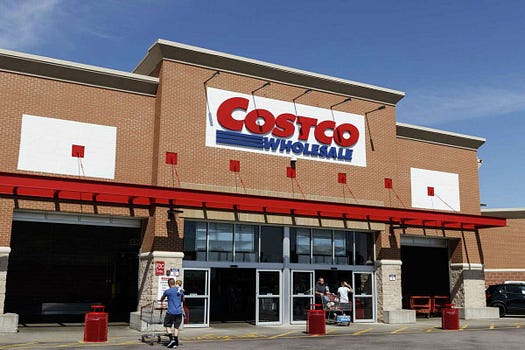China
Evergrande rushes to keep its interest-bearing debt ratio down under Beijing's
"three red lines" policy, causing more problems.
The ordeal
faced by China Evergrande has made headlines in the past month. As China's most
indebted property developer, it urgently needs to cut its debt pile to bring
its finances into compliance with "three red lines" set last year by
the country to restrict further borrowings by property developers.
What are the
"three red lines"?
The Ministry of
Housing and the People's Bank of China drafted the rules in August 2020.
·
The
debt-to-assets ratio should be less than 70%, excluding advance proceeds from
projects sold on contract.
·
The
net debt to equity ratio should be less than 100%.
·
The
cash to short-term borrowing ratio should be more than 100%.
Under the three
red-line policy, property developers are scored as green, orange, yellow or red
based on how many of the "lines" they cross, and their debt growth
will be capped accordingly. If categorized as red, the company will not be
allowed to increase its debt in the following year, which was Evergrande's
case.
Why is
Evergrande so Debt-ridden?
Although a high
debt ratio is expected in real estate, Evergrande's problem is more than that.
It owns businesses in eight major industries, including real estate, property
services, streaming service Hengten networks, online automobile marketplace
Fangchebao, electric vehicle maker Hengchi, Evergrande Fairyland, Evergrande
Health and Evergrande Spring.
· Main business - Property
Development
In the early
years, the government, enterprises, and people were keen on real estate
development as it was profitable. Later the market gradually returns to
rationality with the tightening policies and the retreat of investment
enthusiasm. For example, in the past three years, the best-selling houses
located in urban core areas and mature industrial clusters in the Yangtze River
Delta and Pearl River Delta. People prefer the new Chinese style and
minimalistic style. Even though Evergrande claims that 67% of its land is in first and
second-tier cities, few are in the core area. Product development is also
outdated, resulting in poor sales that need discount promotion to boost.
· Diverse Trend
Evergrande has
been trying to diversify and broaden its territory. Since 2009, Evergrande has
entered the fields of department stores, supermarkets, mineral water,
agricultural products, animal husbandry, dairy, orthopaedics, health care,
tourism, sports, film and television, automobile and so on. Yet, they have
achieved so little from all these businesses after these years.
How Does
Evergrande Reduce Interest-bearing Liabilities?
A key factor
affecting the "three red lines" policy is interest-bearing
liabilities. At the end of 2019, Evergrande's interest-bearing liabilities were
RMB799.9 billion (US$125 billion). It rose to RMB874.3
billion (US$136.6 billion) in Q1 2020. According to Evergrande's 2020 financial report, by the end of 2020, its total
interest-bearing debt was RMB716.5 billion (US$112 billion).
At Evergrande's
earnings conference in March 2021, Xu Jiayin gave a downgrading plan for the
next three years:
·
Reduce
the net debt ratio to less than 100% by 30 June 2021.
·
Bring
the cash to short-term borrowing ratio above one by 31 December 2021.
·
Keep
the debt-to-assets ratio less than 70% by 31 December 2022.
At the end of
June, Evergrande announced it had reduced its interest-bearing liabilities to
about RMB 570 billion (US$89 billion). In other words, Evergrande reduced its
debt by RMB146.5 billion (US$22.9 billion) within only half a year.
There are
usually three ways to reduce interest-bearing liabilities: one is "selling
more, collecting more money and investing less" at the operational level,
and at the same time paying the debt through equity financing; One is to hide
interest-bearing liabilities at the financial level; The last is to occupy
non-interest-bearing commercial bills.
In the first
half of 2021, Evergrande's sales were RMB356.8 billion (US$55.7billion), and
its payment collection was RMB321.2 billion (US$50.2 billion), up only 2.9%
year on year.
According to
statistics from Focus Finance and Economics, Evergrande raised about HKD62.7
billion (US$8.2 billion) in the first half of this year through rights issue
financing, strategic investment, and asset sales.
In terms of
investment, Evergrande did not appear on the TOP
100 List of Real Estate Enterprises' Land Reserving in the first half of 2021, whose
threshold is RMB 3.7 billion (US$0.6 billion). It acquired RMB63.3 billion
(US$9.9 billion) worth of land in the same period last year.
In general,
operational methods are not enough. Evergrande does not release its financial
statements for the first half of 2021 till now. Thus, we are unable to know the
details.
The
non-interest-bearing notes are payments to upstream suppliers that Evergrande
can only temporarily defer at present. In April 2021, Evergrande released its annual report on corporate bonds in 2020, showing
that its notes payable balance exceeded RMB205.7 billion (US$32.1 billion),
accounting for 13.51% of the total liabilities. This amount is equivalent to
more than ten real estate enterprises such as China Resources, Greenland and
Sunac.
Bad News
Continues
As the first
red line being successfully crossed, Evergrande should be able to breathe a
sigh of relief. However, Evergrande's behaviour of robbing Peter to pay Paul
triggers a series of vicious chain reactions.
On 27 May, Caixin reported that the China Banking and
Insurance Regulatory Commission was investigating related party transactions of
over RMB100 billion (US$15.7 billion) between Evergrande and Shengjing
Bank.
On 20 June, the
Yuelongtai project in Xuchang was suspended. The China Railway Construction
Group, which is building the project for Evergrande, claimed that it was unable
to pay the workers since Evergrande owed it more than RMB20 million (US$3.1
million).
On 29 June, the
listed company SKSHU Paint Co., Ltd. announced that the company's bills
receivable from Evergrande were overdue. As of the end of March, the company's
outstanding bills amounted to RMB53.6 million (US$8.4 million). That evening,
Evergrande quickly responded that they had paid the bill in June. Later SKSHU
confirmed this news.
On 30 June, Moody's downgraded Evergrande's rating to B2, saying
further downgrades may be on the way.
On 19 July,
according to Wuxi Intermediate Court, Guangfa Bank requested to freeze
RMB132 million (US$20.6 million) of bank deposits from Yixing Hengyu Real
Estate Co., Ltd. and Evergrande Real Estate Group Co., Ltd. or seize other
equivalent assets. Soon the two sides reconciled.
On 19 July, the Housing and Urban-Rural Development Bureau of Shaoyang, Hunan province, announced the
suspension of the pre-sale license, online registration and pre-sale fund
allocation of the Evergrande Future City project and the Evergrande Huafu
Project. It found the supervised amount was not in line with the actual sales
amount. Soon Evergrande paid RMB120 million (US$18.8 million), and the projects
resumed.
On 22 July, the Lanzhou Municipal Bureau of Natural
Resources issued a
notice urging 41 developers, half of whom are Evergrande subsidiaries, to pay
land-transferring fees.
On 26 July, S&P Global downgraded Evergrande and its
affiliates from B+ to B- with a negative outlook. In response, Evergrande said
that it did not rule out the possibility that foreign institutions deliberately
shorted Evergrande's shares by repeatedly creating public opinion.
On 28 July, the
Housing and Urban-Rural Development Bureau of Heze, Shandong province, received reports
that some Evergrande projects sold at unfairly low prices.
On 28 July, Fitch
Ratings again
downgraded Evergrande Group and related companies to CCC+.
On the evening
of 28 July, Huaibei Mining sued three Evergrande companies. It
said Lu'an Hengda owed RMB401.3 million (US$62.7 million) for the completed
project and liquidated damages, and that Evergrande Real Estate Group Hefei
Co., Ltd. and Evergrande Real Estate Group Co., Ltd. were liable for the
settlement. Evergrande responded that Evergrande Real Estate Group Co., Ltd.
was not the subject of the contract and should not be involved in the lawsuit,
and it had filed an objection to the court.
On 29 July, Langfang Development announced at night that the judiciary
department froze all shares held by Evergrande Real Estate Group Co., Ltd. The
frozen shares were 76.032 million, accounting for 20% of the total share
capital.
Can
Evergrande Survive the Crisis? Or Will It Go Bankrupt?
As early as
October 2016, Evergrande tried to return to the A-share listing through a
backdoor. Later it got an investment of RMB130 billion (US$20.3 billion). Under
the contract, Evergrande must repay the debt and payout RMB13.7 billion (US$2.1
billion) in dividends to investors by 31 January 2020. However, in September
2020, Evergrande's IPO plan was declared a complete failure. With bankruptcy as
a threat, Evergrande successfully converted this 130 billion debt into shares.
The money continued Evergrande's life but put Suning on the path of change of
ownership. Evergrande is on the blacklist of financial institutions and
investors from then.
Suppliers are
angry about the delay of commercial bills. On the trading floor of the Shangpiaoquan, there are 84 commercial bills with
Evergrande companies as acceptors, totalling RMB101.4 million (US$15.9
million), most of which have an APR of over 30%.
According to Fitch Ratings,
Evergrande raised only RMB8.2 billion (US$1.3 billion) by issuing domestic bonds
in 2021.
The share price
of China Evergrande (03333.HK) has dropped to HKD5.26 from HKD28 in July last
year. Evergrande has difficulty raising money from the stock market now.
Touching too
much bottom line, Evergrande is under siege on all sides. Rumour had it that
the company was going bankrupt because of its capital problem in 2017, yet it
survives successfully. Will it break the ice successfully like four years ago?


